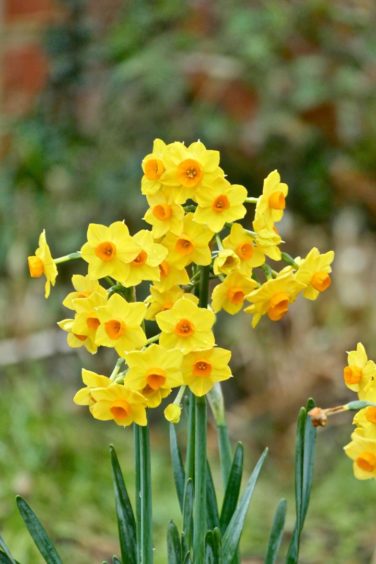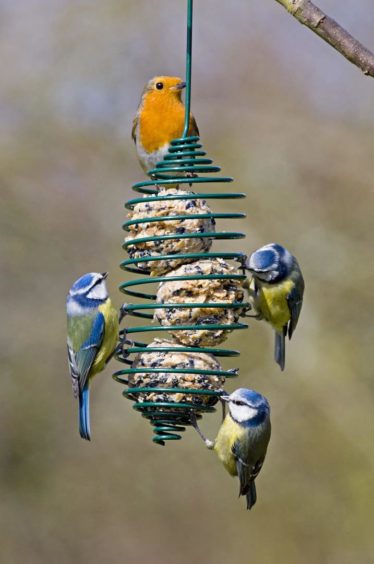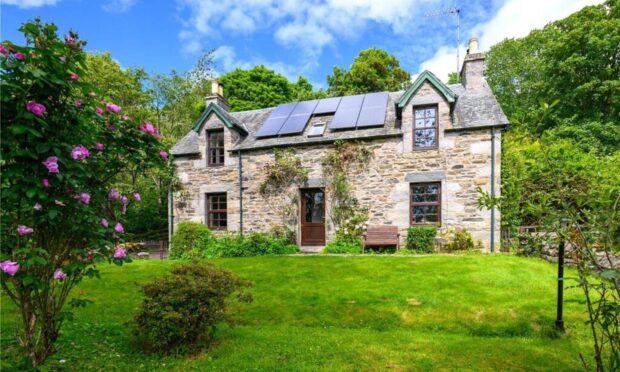It’s feeling like a proper winter this year, we’ve had a nice long spell of cold weather and even some of the white stuff, says Brian Cunningham.
As much as I love seeing fresh snow sitting on the branches of evergreen conifers, being able to get out with my camera taking pictures of the seed heads of my perennials and grasses on those cold, crisp, blue sky days, it was starting to get me frustrated because all I wanted to do was to get out into the garden and on with some work.
As much as I’m itching to get on I know in the long run this type of winter is going to benefit the garden for the rest of this year. Too often now our winters are mild and wet with the plants not fully understanding when the time is right to re-start growing.
There’s no doubt this year they’ve got the message with weeks of low temperatures. No deciduous shrub or herbaceous plants in their right mind would want to throw out shoots of soft new growth too early, only to be hit by a hard frost.
Milder winters
I can recall reading an article in the late 1990s saying how spring flowering rhododendrons were coming into bloom earlier and earlier each year due to the increasing number of milder winters we were experiencing, this was the point where it hit home the effects our warming climate would have.
This is something I find noticeable with snowdrops every year. Back in November, I was really surprised just how far into growth our native snowdrops were in the grounds of Scone Palace, getting to the point just before Christmas that I could see the white of the forming flowers, weeks earlier than I would expect them to be with us. Thankfully, the cold spell has slowed them right down and back on to schedule for flowering in February.
It’s the same for the daffodils. Two years ago we had such unseasonably warm weather late winter that snowdrops and daffs were flowering at the same time, this did not feel right. Snowdrops say winter, daffodils say spring is how it is in my mind.

Scientists have been using phenology to study how the changes in our climate are affecting the flowering times of plants, something that could have consequences in agriculture and food production. Individual or specific genus of plants are observed regularly and details of their initial leaf burst – or the date the first flowers on the plant are fully opened – are noted annually. Trends can then be spotted.
A period of chilling is key to the survival for many of our plants. It’s their way of ensuring that the seeds they shed in autumn don’t germinate too soon only to be wiped out by frosts during the winter months.
Stratification
Also known as cold moist stratification, this tactic means germination will take place in spring and is something us gardeners can mimic in couple of ways. Seed can be sown in autumn and left outside in the open being brought under frost protection once germinated or they can be mixed with some damp compost prior to storing in the fridge for a few weeks. This is a technique which I use for Douglas Fir seeds and also suitable for seeds of gentians, verbena and alliums.
I know we like to leave pockets of long grass and dead foliage in place from some of our herbaceous for wildlife to use as places of shelter over winter but as us gardeners are aware, there are many unwanted wee beasties, too. A good, cold winter helps to keep their numbers in check with predators like birds searching all the more harder for their next meal, picking them off.
When it’s hard to do any work outdoors because of the weather, these are the best days for going on a wander, watching the birds at the feeders and just enjoying our own private paradises before heading back indoors to look at all the various catalogues that end up coming through the letterbox.

I do hope it warms up soon, though, as I’ve ended up spending a blooming fortune from being too much time indoors unable to resist. I’ll be happy, though, with my new potted displays of gladioli and lilies come late summer.
I’ve still not got my veg seed order in yet. I’m needing to get a move on as – you never know – with nearly three million new gardeners in the UK there could be a lot of demand again this year for garden plants and products.
I’m sure it’ll be fine, though. It’s a nice place for our industry to be in and I’m not expecting it to be so bad that we end up with a toilet roll situation like we saw in the supermarkets during the first lockdown.
Plus, with things not going as planned, I’ve still got a lot of my seed packets left over from last year. I keep them stored the best I can in a cool, dry spot so as long as they are still within their “sow by” date, I’ll still be able to use them.
- Brian Cunningham is a presenter on the BBC’s Beechgrove Garden. Follow him on Twitter @gingergairdner










